With the backdrop of 1950s New York and its burgeoning advertising industry, Adman: Warhol Before Pop focuses on the formative years of one of the 20th century’s most influential artists.
Adman: Warhol Before Pop provides surprising insights into the beginning of Andy Warhol’s career, from his award-winning work as a commercial illustrator through to his first, little-known gallery exhibitions of drawings and artist books. With over 300 objects—from rare drawings and photographs to vintage advertisements, artist books and recreated department store window displays—many on public display for the first time, Adman provides a comprehensive look at Warhol’s first decade in New York.
Children, shoes, album covers, and women’s fashions dominate this nascent period of commissioned commercial work and artistic projects. But intimate drawings of young men, archival material from a world tour through Europe and southeast Asia, and drawings produced with his mother, present the complexities of Warhol’s personal journey for success at the start of his career. Foremost to the thesis of this exhibition, Adman lays bare the visual and aesthetic foundation, one dependent on a commercial sensibility, that influenced Warhol’s entire artistic career.
This exhibition is a collaboration between The Andy Warhol Museum and Art Gallery of NSW, Sydney and was curated by Nicholas Chambers, senior curator, modern and contemporary international art at Art Gallery NSW. The exhibition at The Warhol is organized by Jessica Beck, The Warhol’s Milton Fine curator of art.
Adman: Warhol Before Pop is generously supported by
![]()
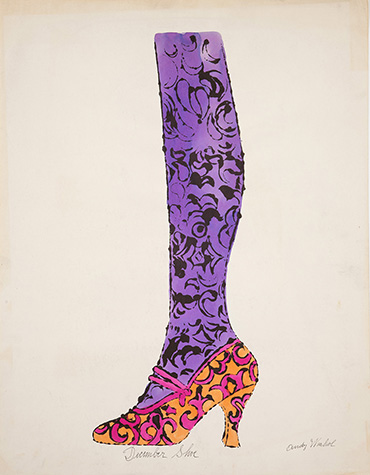
Andy Warhol, Shoe and Leg ("December Shoe"), ca. 1956
The Andy Warhol Museum, Pittsburgh; Founding Collection, Contribution The Andy Warhol Foundation for the Visual Arts, Inc.
© The Andy Warhol Foundation for the Visual Arts, Inc.
2000.2.1275
I’m still a commercial artist. I was always a commercial artist.
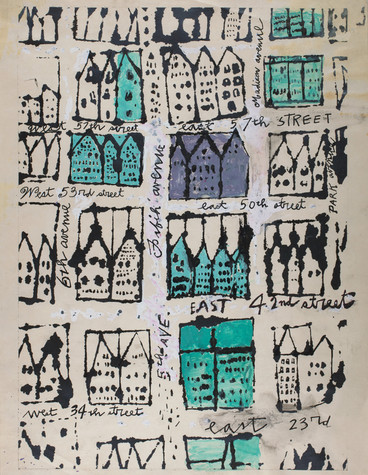
Andy Warhol, New York City Map, 1950s
The Andy Warhol Museum, Pittsburgh; Founding Collection, Contribution The Andy Warhol Foundation for the Visual Arts, Inc.
© The Andy Warhol Foundation for the Visual Arts, Inc.
1998.1.1155
In 1949, at the age of 20, Andy Warhol made the life-changing decision to move to New York City. Having just graduated from Pittsburgh’s Carnegie Institute of Technology—the predecessor of Carnegie Mellon University—with a degree in pictorial design, he could not have arrived at a more opportune time. His new home was the engine room of a rapidly evolving advertising industry centered on Madison Avenue.
Warhol took a playful and unusual approach in his commercial work that emphasized wit and creativity over technical ability. In doing so, he established his own identifiable brand—a whimsical illustration style that appealed to clients who favored the artistic values that it represented. Notably, his work privileged drawing at a time when photography was on the rise. Warhol established this approach with his first New York commission, for the September issue of Glamour magazine. By 1952, he had a roster of clients that included magazines, record labels, and the fashion industry.
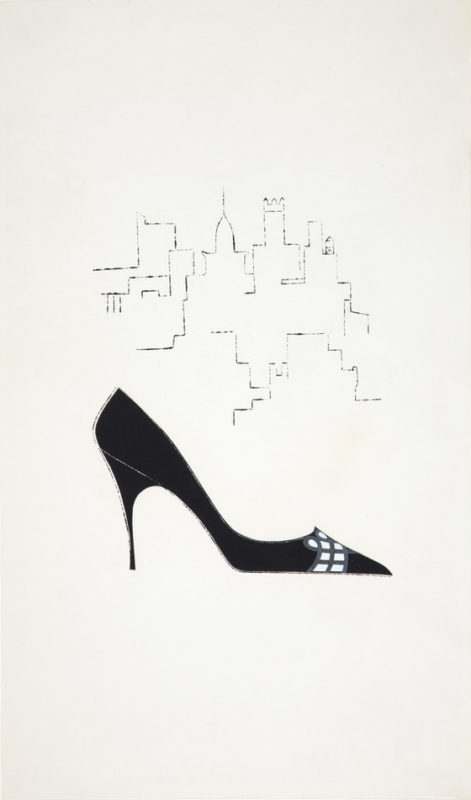
Andy Warhol, High Heel with City Backdrop, 1950s
The Andy Warhol Museum, Pittsburgh; Founding Collection, Contribution The Andy Warhol Foundation for the Visual Arts, Inc.
© The Andy Warhol Foundation for the Visual Arts, Inc.
1998.1.1261
During the 1950s, Warhol was especially renowned for his illustrations of shoes. In addition to receiving numerous advertising commissions from shoe manufacturers, Warhol often used shoes as the subjects of artworks. In 1956, in his first appearance in a museum exhibition, a shoe drawing was shown at the Museum of Modern Art.
Warhol’s largest body of commercial illustrations was produced for I. Miller & Sons, a shoe manufacturer and retailer that employed him to create large-format advertisements for The New York Times between March 1955 and December 1959. Lauded by the New York advertising industry, Warhol’s I. Miller campaign created an entirely new image for the company with innovative illustrations that often avoided directly representing the product being advertised. The company’s art director, Peter Palazzo, described Warhol’s advertisements as “full of good copy and ideas. We try to stir the woman’s imagination…to make her think of color without using color…to make her think of shoes without giving details.”
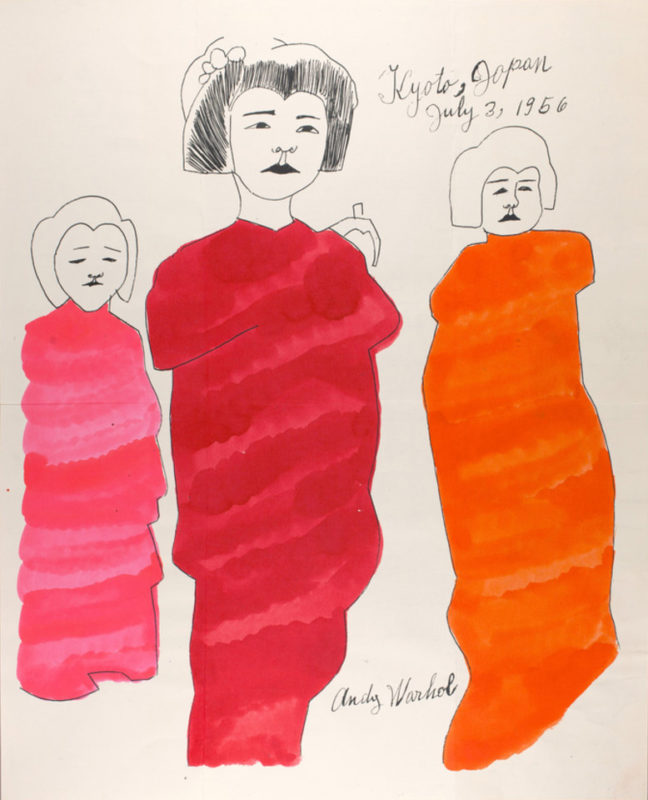
Andy Warhol, "Kyoto, Japan, July 3, 1956", 1956
The Andy Warhol Museum, Pittsburgh; Contribution The Andy Warhol Foundation for the Visual Arts, Inc.
© The Andy Warhol Foundation for the Visual Arts, Inc.
2000.2.1321
By the mid-1950s, Warhol’s success as a commercial illustrator had provided him with the means to embark on his first trip outside the United States. Accompanied by his friend, set designer Charles Lisanby, Warhol departed on June 16, 1956. Warhol documented the trip in a number of sketchbooks and collected many souvenirs along the way.
Warhol’s trip took him to San Francisco, Honolulu, Japan, Hong Kong, Manila, Jakarta, Bali, Singapore, Bangkok, Siem Reap, Colombo, Calcutta, Kathmandu, Benares, New Delhi, Agra, Aurangabad, Cairo, Luxor and Rome. Of particular note was his time in East Asia, where Warhol encountered extensive use of gold in traditional art and design. The trip may have inspired his use of gold leaf in drawings and for his book, A Gold Book (1957).
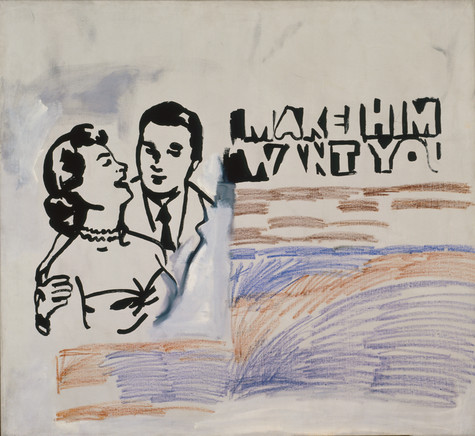
Andy Warhol, Make Him Want You, 1961
The Andy Warhol Museum, Pittsburgh; Founding Collection, Contribution Dia Center for the Arts
© The Andy Warhol Foundation for the Visual Arts, Inc.
1997.1.2
The years 1960 through 1962 were a period of transition for Warhol. He began recasting his persona from fey adman to cool artist and experimented with new ideas that ultimately paved the way for his first Pop works. Warhol executed his first concerted series of paintings and drawings at this time, taking the products of the advertising industry as his subject matter.
In many of his early Pop works, Warhol appropriated images from newspapers and magazines, platforms where his own commercial work was still regularly being published. He enlarged, cropped, and erased elements of the original images so that they no longer functioned as advertisements but were transformed into works of art.
Image Gallery
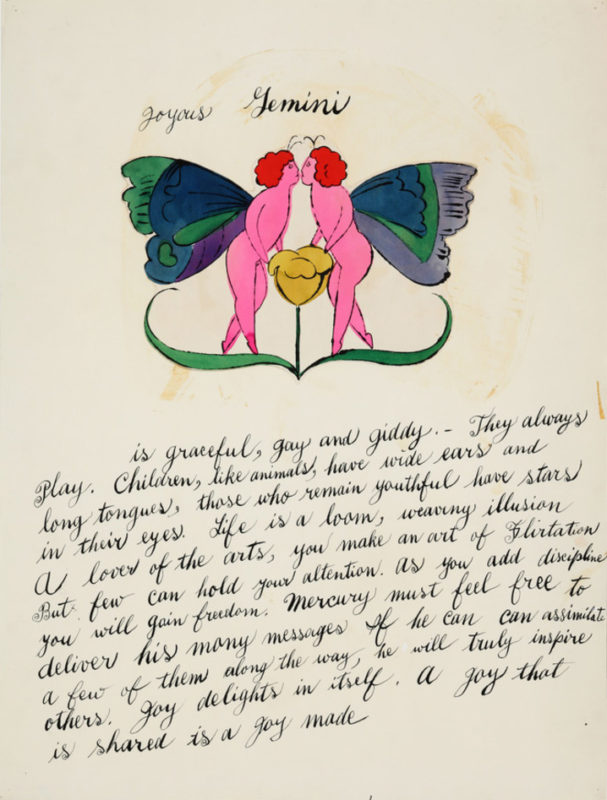
Andy Warhol, Robert Cumming, Horoscopes for the Cocktail Hour ("Joyous Gemini"), ca. 1961
The Andy Warhol Museum, Pittsburgh; Founding Collection, Contribution The Andy Warhol Foundation for the Visual Arts, Inc.
© The Andy Warhol Foundation for the Visual Arts, Inc.
1998.1.1347
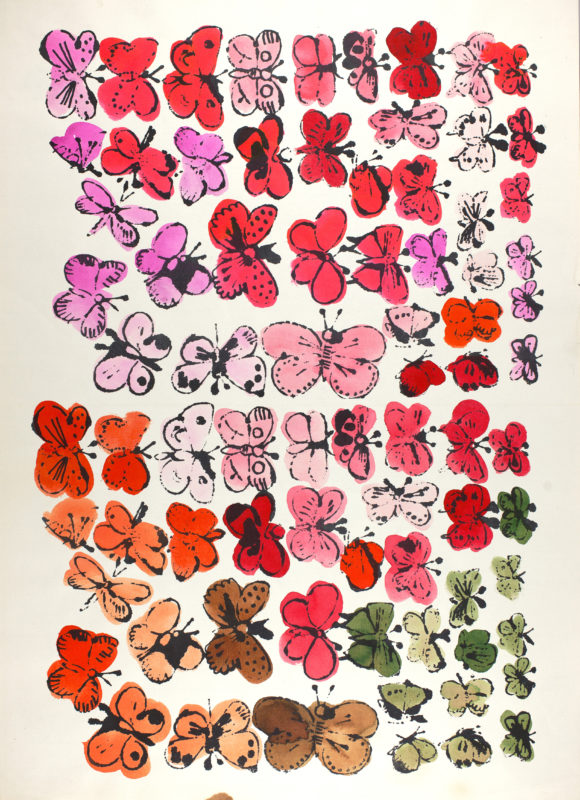
Andy Warhol, Happy Butterfly Day, 1955
The Andy Warhol Museum, Pittsburgh; Contribution The Andy Warhol Foundation for the Visual Arts, Inc.
© The Andy Warhol Foundation for the Visual Arts, Inc.
2000.2.1261
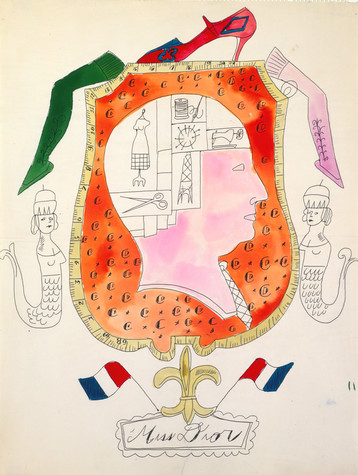
Andy Warhol, "Miss Dior", ca. 1955
The Andy Warhol Museum, Pittsburgh; Founding Collection, Contribution The Andy Warhol Foundation for the Visual Arts, Inc.
© The Andy Warhol Foundation for the Visual Arts, Inc.
1998.1.1848
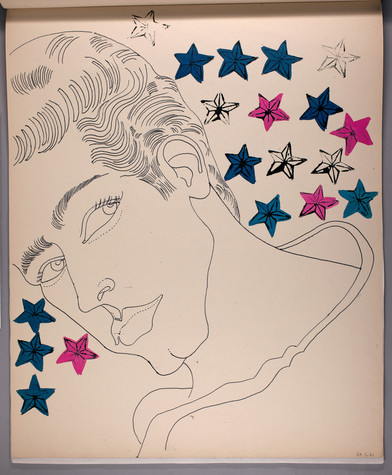
Andy Warhol, Whole Sketchbook: Male Portrait, Male Portrait With Stamps, n.d.
The Andy Warhol Museum, Pittsburgh; Founding Collection, Contribution The Andy Warhol Foundation for the Visual Arts, Inc.
© The Andy Warhol Foundation for the Visual Arts, Inc.
1998.1.1789.1-1998.1.1789.21
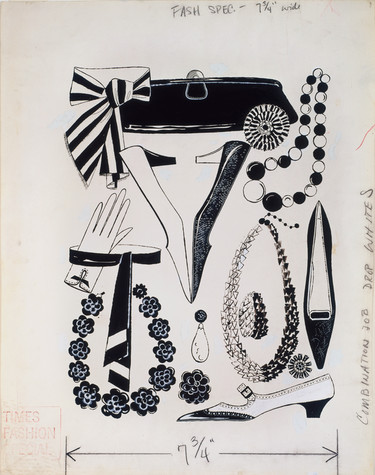
Andy Warhol, Multiple Fashion Accessories, 1950s
The Andy Warhol Museum, Pittsburgh; Founding Collection, Contribution The Andy Warhol Foundation for the Visual Arts, Inc.
© The Andy Warhol Foundation for the Visual Arts, Inc.
1998.1.1227
Making It: Andy Warhol’s Techniques
In this video series, our educators demonstrate Andy Warhol’s techniques from the 1950s and 1960s.
Publication
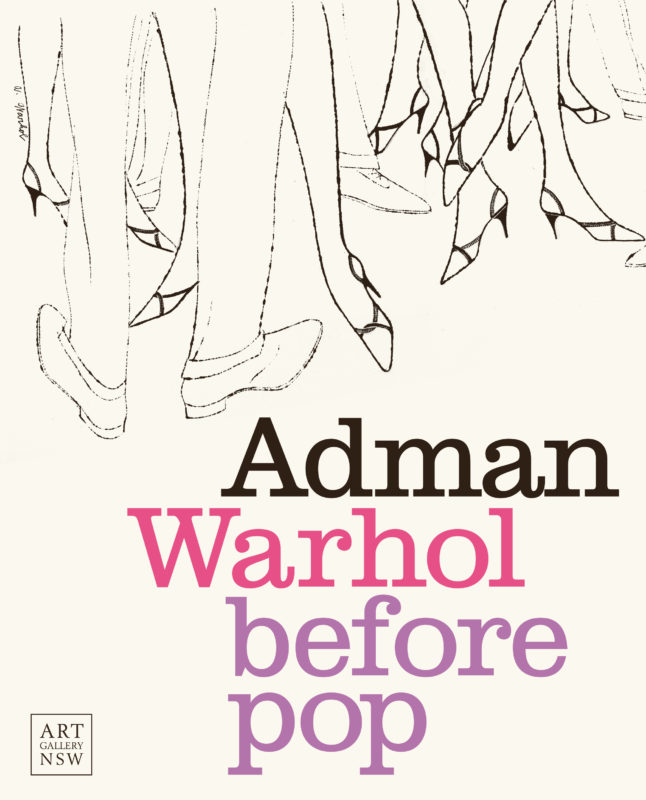
Adman: Warhol Before Pop
This volume is published in conjunction with the exhibition at the Art Gallery of New South Wales Adman: Warhol Before Pop. Essays by Warhol scholars and other experts in their fields provide surprising insights into the beginning of Warhol’s career, from his award‐winning work as a commercial illustrator through to his first, little‐known exhibitions.
Nicholas Chambers, Richard Meyer, Blake Gopnik, Brett Littman, Matt Wrbican, Nina Schleif, Tom Sokolowski, and Ellen Lupton
Hardcover, 248 pages, 150+ illustrations
Co-published by Art Gallery of New South Wales and The Andy Warhol Museum, 2017
$39.95

